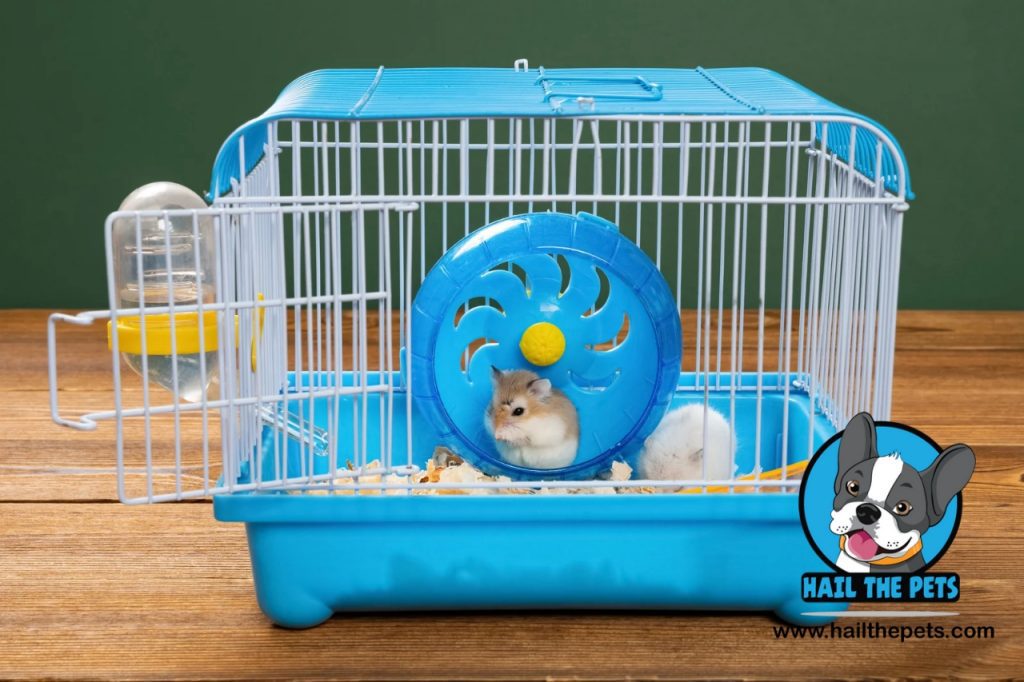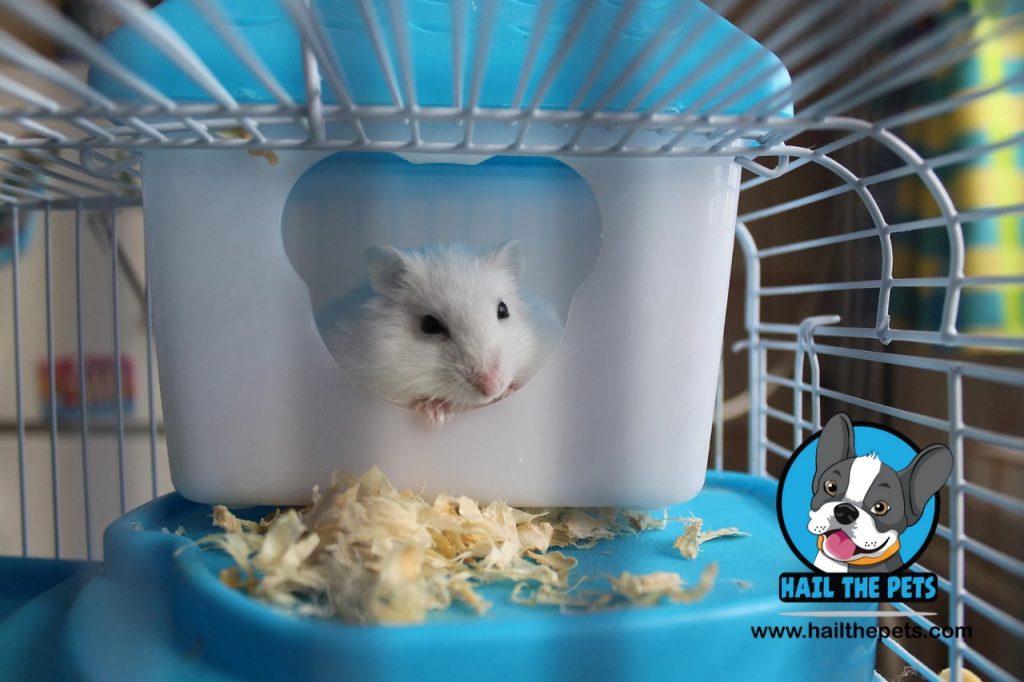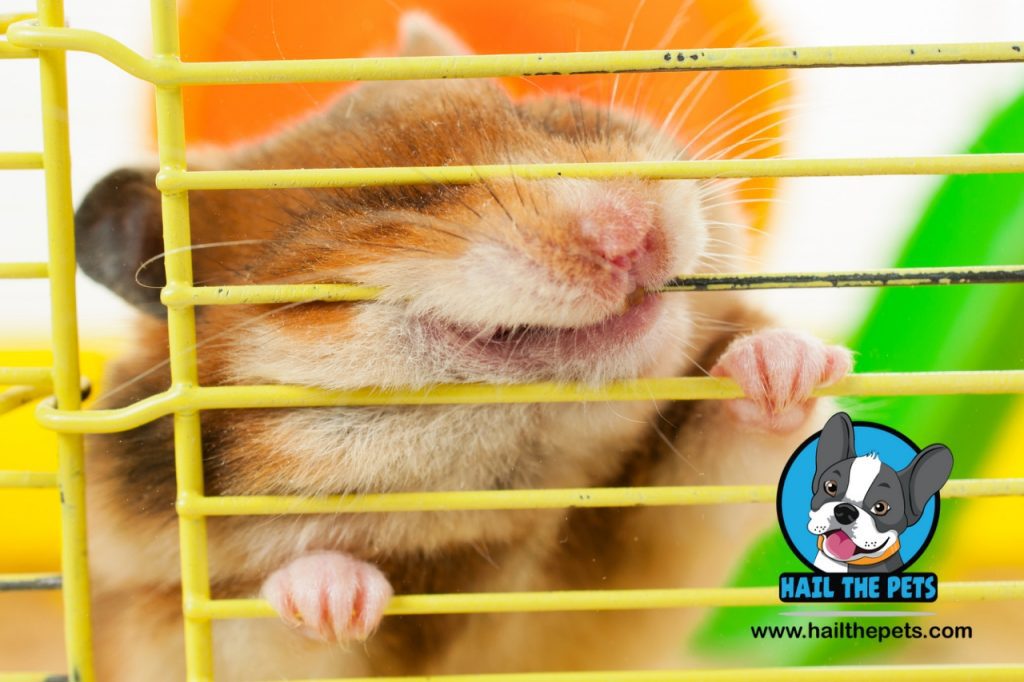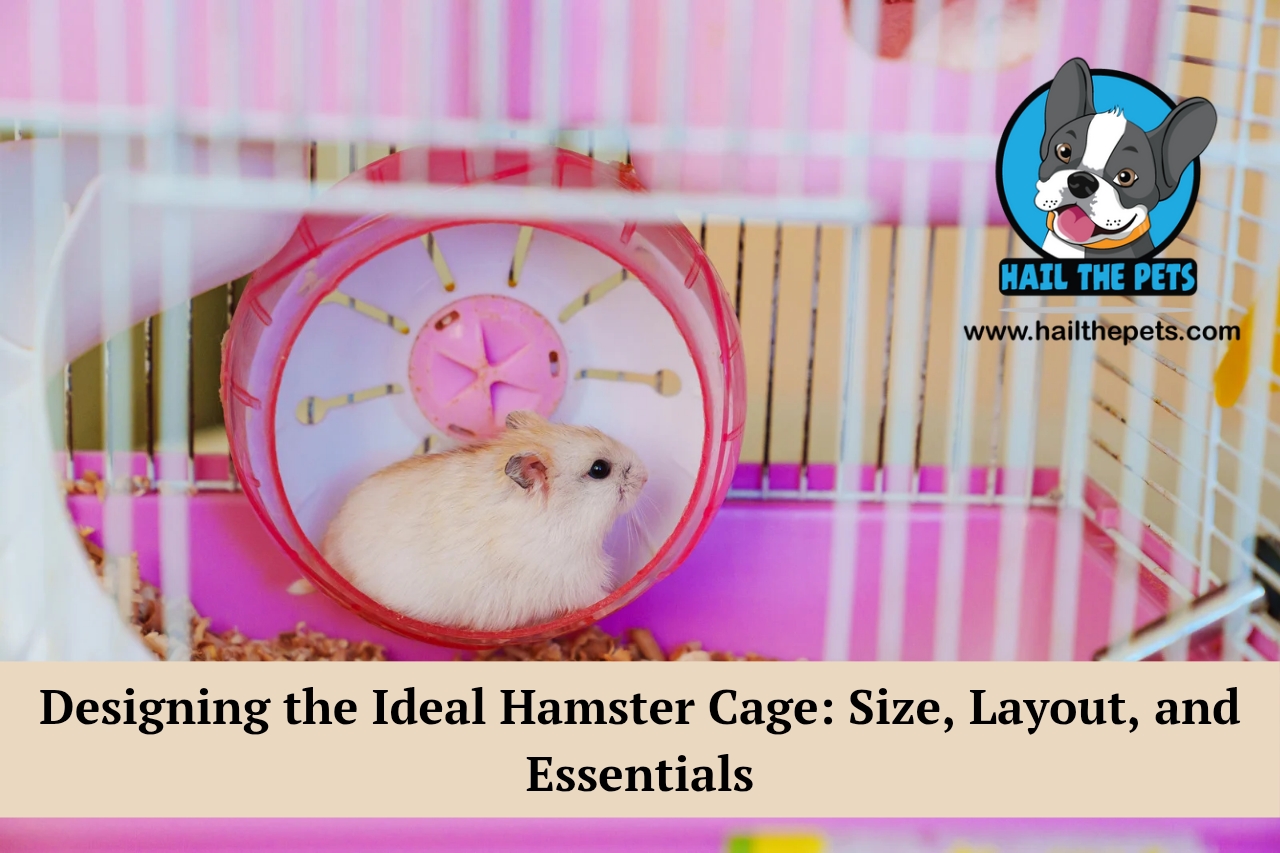Little Ayaan brought Toffee, his first hamster, to his home. He thought the colorful pet store cage was perfect. Soon, Toffee began chewing bars and frantically digging. Something was clearly off.
After learning more, Ayaan’s family upgraded her cage. This was deeper bedding, more space, a proper wheel, and a cozy hideout. The difference was instant. Toffee was calmer, curious, and finally at home.
One of the biggest mistakes new hamster owners make is placing everything randomly inside the cage. A water bottle here, food dish there, a couple of chew toys scattered around and that’s it. But, a hamster thrives in a thoughtfully zoned environment. An ideal hamster cage is all about instinct. These tiny creatures need space to burrow, stash food, and explore.

Designing the Ideal Hamster Cage
One of the biggest mistakes new hamster owners make is placing everything randomly inside the cage. A water bottle here, food dish there, a couple of chew toys scattered around and that’s it. But, a hamster thrives in a thoughtfully zoned environment.
A hamster’s cage is their entire world. From sleeping and digging to exercising and storing food, every activity happens inside that space. It can lead to health issues if the cage is too small and poorly laid out. Bar chewing, obsessive digging, and aggression are often signs of a cage that doesn’t meet their needs.
When the setup supports their natural instincts, hamsters become calmer and visibly happier. A zoned setup is always practical and deeply beneficial for your pet’s mental health. Let’s walk through what truly matters in building an ideal hamster cage for your furry friend that is not only healthy but pretty too.
Read more: Top 10 Must-Have Pet Supplies for Every Pet Owner – August 2024
Ideal Hamster Cage Setup Ideas
An ideal hamster cage setup idea involves dividing the cage into functional areas. Picture it like a tiny apartment. Imagine, a bedroom for nesting, a kitchen area for food and treats, a gym zone with a wheel, and an open hallway for exploring. This type of design reduces stress and mimics natural behavior.
Consider creating elevation with tunnels that lead from one room to another. Adding cork bark, PVC pipes, or even toilet paper rolls allows your hamster to explore and feel secure. Emma, a hamster enthusiast, once shared how redesigning her cage into sections led to her hamster stopping her obsessive chewing.
Read more: Adopting A Senior Cat: Rewards and Responsibilities – June 2025
Best Hamster Bedding Materials
Bedding is the foundation of every cage. It regulates temperature, absorbs moisture, and satisfies a hamster’s powerful instinct to dig and hide. Choosing the best hamster bedding materials is one of the most important decisions you’ll make. Paper-based bedding tops the list. It’s ultra-absorbent and safe for sensitive noses.
Aspen shavings are another great choice. It offers a natural and woodsy scent without the toxic oils found in pine or cedar. Hemp bedding is gaining popularity for being biodegradable and virtually dustless. It is perfect for owners with allergies. Depth is critical. Aim for at least 6 inches (15 cm) of bedding, but more is better.
Check out: Pet Adoption vs. Buying a Pet: What You Need to Know to Make the Best Choice – August 2024
According to a 2011 study by the Swiss Federal Food Safety and Veterinary Office, hamsters with 40–80 cm of bedding showed significantly fewer signs of stress compared to those with shallow layers. Source. Layering also helps in building an ideal hamster cage.
Mix paper bedding with a small amount of hay or shredded toilet paper to provide both structure and comfort. Your hamster will tunnel, hoard, and even build walls with it, turning basic bedding into a building block for emotional health.
Read more: Understanding Your Pet Rat: Tips for a Happy and Healthy Companion – May 2025
Hamster Cage Accessories
Accessories are more than decor. They’re daily enrichment tools. An ideal hamster cage accessory provides stimulation, exercise, and a sense of safety. The essentials include at least one solid hideout, multiple chew items, a sand bath, and an elevated platform or lookout point. Hideouts can be wooden houses, ceramic caves, or even clean cardboard boxes.
These give your hamster a place to retreat and feel secure. Chew toys are essential for dental health since hamster teeth never stop growing. Willow balls, applewood sticks, and mineral chews help keep their teeth in check. A sand bath (using chinchilla sand, not dust) allows your hamster to clean their fur naturally. Place it in a shallow bowl and watch them roll, dig, and fluff their coat. Lina, an experienced hamster mom, rotates her accessories every week.
She noticed her hamster Felix became more curious and less lethargic once she started introducing new chew toys and changing hideout locations regularly. These small changes created a mentally stimulating environment and it showed. Accessories might be tiny, but their effect on your hamster’s day-to-day life is enormous.

Safe Hamster Wheel Options
Exercise wheels are a must, but the wrong kind can lead to serious health problems. The safest hamster wheel options are solid-surface, open-sided wheels that allow free movement without risking injury. Syrian hamsters need a minimum of 12 inches (30 cm) in wheel diameter to avoid spine curvature. Dwarf species can manage with 8-inch (20 cm) wheels.
Read more: Top 10 Rabbit Breeds: Find the Perfect Rabbit for Your Family
Avoid barred wheels or mesh designs, which can trap tiny toes or cause tail injuries. Solid plastic wheels like Silent Runner or the Nightangel wheel are popular because they’re quiet, smooth, and safe. Once Sarah replaced Luna’s too-small wheel with a 12-inch solid spinner, she noticed Luna running for longer sessions without hunching her back or slipping.
A wheel is a health necessity. Without one, hamsters can develop obesity, boredom, or destructive habits. With the right wheel, they stay active, agile, and entertained.
Read more: What’s safe for your hamster
Multi-Level Hamster Cages
Multi-level setups look fun and offer vertical space, but they come with pros and cons. On the one hand, multi-level hamster cages provide more room to explore and can be useful when floor space is limited. Platforms, ramps, and upper decks give hamsters a new perspective and allow for functional layering of zones. Hamsters don’t have great depth perception.
Falls from even a short height can result in serious injuries. Platforms must be low, well-guarded with side barriers, and connected by gentle ramps rather than ladders. Vet consultants always warn that overly tall multi-level cages often cause more harm than good. Hamsters are ground creatures.
Their instincts don’t involve climbing trees. They dig, not ascend. If you’re using levels, make sure they complement, not replace, adequate floor space and bedding depth. A well-designed and secure multi-level cage can add variety. However, it’s not a substitute for space.
Read more: Grooming Tips: A Beginner’s Guide To Keeping Your French Lop Bunnies’ Locks Tangle-Free – April 2024
Cleaning and Maintaining Hamster Habitats
Cleanliness is non-negotiable when it comes to your hamster’s health. But aggressive cleaning can backfire. The trick is to balance hygiene with scent preservation to avoid disorienting your pet. Daily spot cleaning is your first defense. Remove soiled bedding, leftover food, and visible waste.
This keeps odors down and prevents bacteria buildup. Weekly, change about 30% of the bedding, retaining some used material to keep familiar scents intact. A full deep clean should be done every 4–6 weeks. Remove everything, scrub the cage with pet-safe cleaner, rinse well, and dry completely. Then reintroduce accessories and bedding, mixing old with new to reduce stress.
Liam, who has kept hamsters for years, swears by his cleaning schedule. Since sticking to a light-touch routine, he says his hamsters are less anxious and settle back in quickly after cleaning. Cleanliness supports comfort, reduces disease risk, and helps you monitor your hamster’s health through changes in waste or behavior. It’s a key part of what makes a habitat truly ideal.
DIY Hamster Cage Designs
Sometimes, store-bought cages just don’t cut it. That’s where DIY hamster cage designs shine. They offer space, customization, and cost-efficiency that pre-made cages often lack. The IKEA Detolf hack is a fan favorite. It turns a glass display cabinet into a spacious, horizontal enclosure, perfect for deep bedding and observation.
Another common approach is the bin cage: a large, clear plastic storage box with a ventilated mesh lid. It’s affordable, easy to clean, and adaptable. Carla, a graphic designer, built her own wooden-and-acrylic enclosure with sliding lids and 12 inches of bedding depth.
Her hamster, Peanut, not only stopped chewing bars but began building intricate tunnel systems and hoarding behaviors that she’d never seen before. DIY cages let you design around your hamster’s natural needs, not the marketing trends of pet brands. When done right, they surpass commercial cages in every way.

Conclusion
Building an ideal hamster cage is all about answering your pet’s instincts with wise and careful design. When you provide plenty of room, secure bedding, stimulating accessories, and a clean, stimulating environment, you don’t merely provide your hamster with shelter.
You give them a life to love. Just as Sarah did for Luna, your diligence can turn agitated behavior into calm, happy wandering. It’s not perfect. It’s thoughtful. Because when your hamster feels safe, stimulated, and secure, you’ll see the difference in every burrow, every squeak, and every peaceful nap. The ideal hamster cage is about experience you build. Your hamster definitely deserves nothing less.
